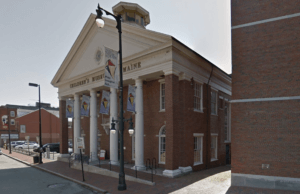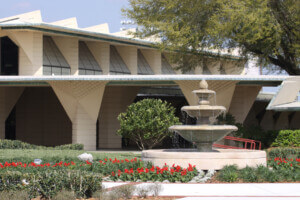Distinguished, admired, and sought after as a philanthropist, Joan K. Davidson, understood and acted on the principle that architecture and design are integral to quality of life. She conducted herself and a lifetime of giving, accordingly.
Joan Davidson, age 96, died on August 11, just a few weeks shy of announcing the 2023 Alice Award with a $25,000 top prize for the most consummately well-designed and beautifully illustrated nonfiction book with a purpose. The Alice Award, named for her mother, is a relatively modest amount but with an outsized impact, and the kind of acknowledgment of worth that Davidson perfected over five decades.
With her crest of white hair and commanding voice, Davidson was wonderfully intimidating but unstintingly generous to the causes dear to her. She gave grande dames a good name especially at the many functions she hosted at Midwood, her estate in Germantown, New York. There, overlooking the railroad tracks to the Hudson River, she could often be found barefoot in peddle-pusher pants asking Upstate politicians, New York City movers, artists and architects from all over tough questions about what they have done lately to make something better.
Davidson had plenty to brag about herself. Her career was a productive matrix of progressive activism and social connectivity stretching back to an early job as a staffer in the office of Senator Lyndon B. Johnson in Washington, D.C. But philanthropy not politics was her calling inspired by her father, Jacob M. Kaplan, who redirected a fortune made in owning the Welch’s Grape Juice company (which he sold to employees in 1956) into the J.M. Kaplan Fund.
Focused largely on New York, the Kaplan Fund has often been the first to step in to aid preservation efforts, its smallest grants signifying projects with the greatest integrity. These included restoration funding in the 1960s for Carnegie Hall before preservation was a cause célèbre; seed money for New York Garden Markets in the 1970s; and enough money for an ad man, Peter Neill, to quit his day job and found the South Street Seaport Museum. Public remembrances of Davidson are being collected on the website of the Kaplan Fund.

Born on May 26, 1927, in New York City, Joan Davidson received her Bachelor of Arts at Cornell, and a degree from the Bank School in education. There were brief stints teaching and writing ad copy for Macy’s before she married C. Girard Davidson, an assistant secretary of the interior under President Truman in 1953. Then followed married life in Oregon and Alaska with four children, a divorce, and a return home to New York City.
In 1977, Kaplan made his daughter president of the Kaplan Fund and manager of an innovative new adaptive reuse project, Westbeth, in the West Village of Manhattan. The 383 rent-controlled, live-work spaces for artists—Diane Arbus, Merce Cunningham, and Tod Williams all lived there at one time or another—occupied 13 old industrial structures which belonged to Bell Laboratories and were converted to apartments and studios by a young architect named Richard Meier.
Around the same time, Davidson was appointed chairwoman of the New York State Council of the Arts, and in 1993, she was named commissioner of the New York State Parks Commission. Her philanthropic projects were diverse and sometimes quixotic—reviving a 1902 ferryboat route up the Hudson was one longtime effort—but always fueled by personal passion and a sense that it was far more effective to give a boost to a new endeavor than support some bandwagon already on a roll. “We were different because we did not just write checks, we stepped in and got involved,” she once told The New York Times.
In the 1980s, ever determined to deploy the power of her purse to produce and protect good design and outraged that the historic Gracie Mansion had fallen into such embarrassing disrepair that mayors no longer wanted to live there, Davidson became the founding chair of the Gracie Mansion Conservancy.
Once bestowed, her benevolence endured. In 2011, Davidson helped to save the architecture and design book stock of Urban Center Books when it closed by funding its relocation to a new home at the Van Alan Institute in a space designed by LOT-EK. She had helped create Urban Center Books decades before.
Davidson’s four children eventually took over direct management of the Kaplan Fund, although she remained a powerful and decisive influence. The new generation’s course of giving has become less New York–centric. In her 70s and raring to go on, Davidson refocused her attentions on establishing Furthermore grants in publishing that specialize in prestige books on history, the arts, and the environment. Over the past decade, Furthermore has supported over 1,400 published titles, ranging widely across many fields from Kenneth T. Jackson’s Encyclopedia of New York City to The Selected Papers of Margaret Sanger.
With Futhermore’s offices in Hudson near Midwood, Davidson spent the past few years anchored on her favorite porch overlooking the river, thoroughly aware of her privilege and doing whatever she could to share it. In 2022, she initiated Carriage House Events where people could come, she said, “to listen, see, think, agree, disagree, and have fun”—in other words, to partake in her recipe for a good life.
Julie Iovine was the executive editor of The Architect’s Newspaper from 2007 to 2013. She now lives in Upstate New York.











